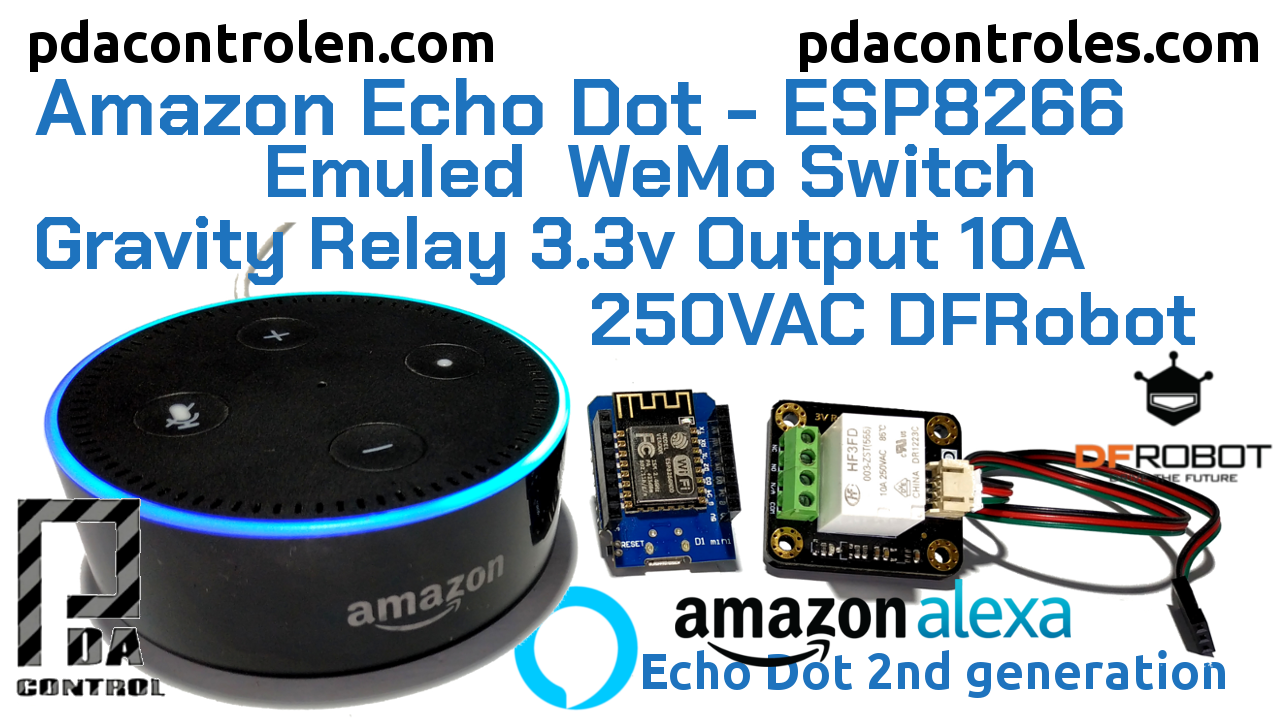Some time ago I made a review of a smart speaker Echo Dot Amazon, Tutorial: Alexa Amazon Echo Dot First Steps and Configuration, this time adding an ESP8266 module Wemos version and a Gravity Relay module to 3v of the DFRobot Online Store, emulate a Wemo Belkin switch.
I’m testing the alexa Skills that are excellent, but I want to initially teach the basics and gradually move forward.
In this case we will activate a Relay output with the help of Alexa.
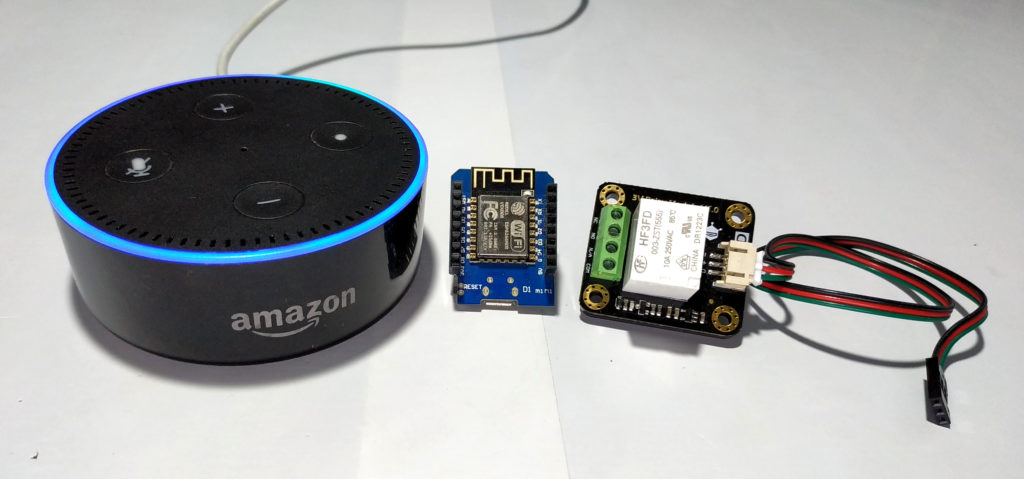
Background
Some will already know that this is nothing new since 2015 that was published in Hackaday which I consider the base project for all these applications, the emulation of these intelligent devices, in this case this Wemo switch using Python Article: HOW TO MAKE AMAZON ECHO CONTROL FAKE WEMO DEVICES and since there are many methods to emulate these devices.

Amazon Echo and Home Automation
The complete documentation of how the Belkin Wemo emulation works is very well detailed in the following articleAmazon Echo and Home Automation thanks to www.makermusings.com for their contribution.
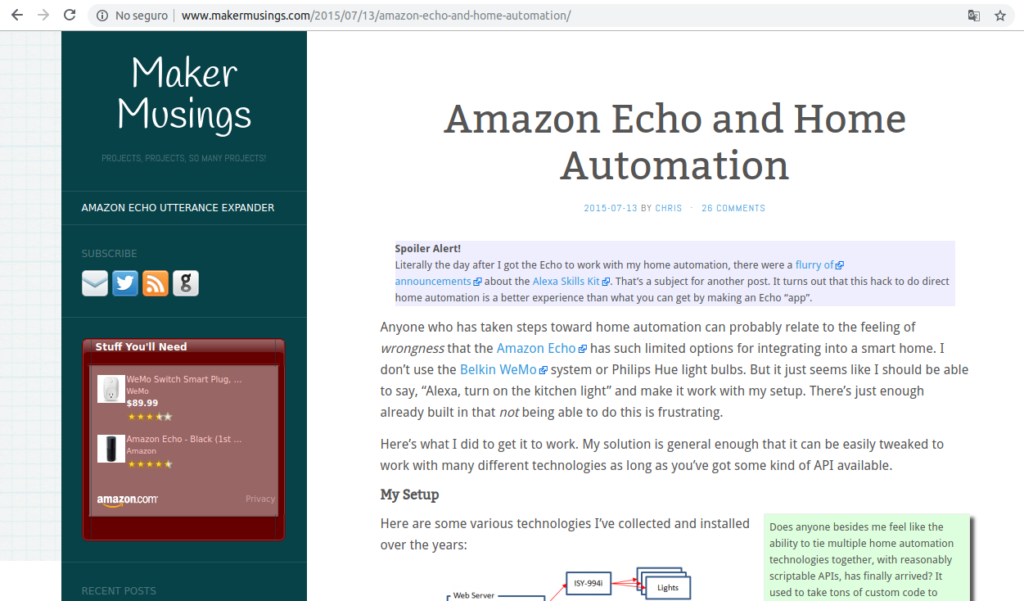
UPnP protocol , is technically a mixture of http, soap and XML.
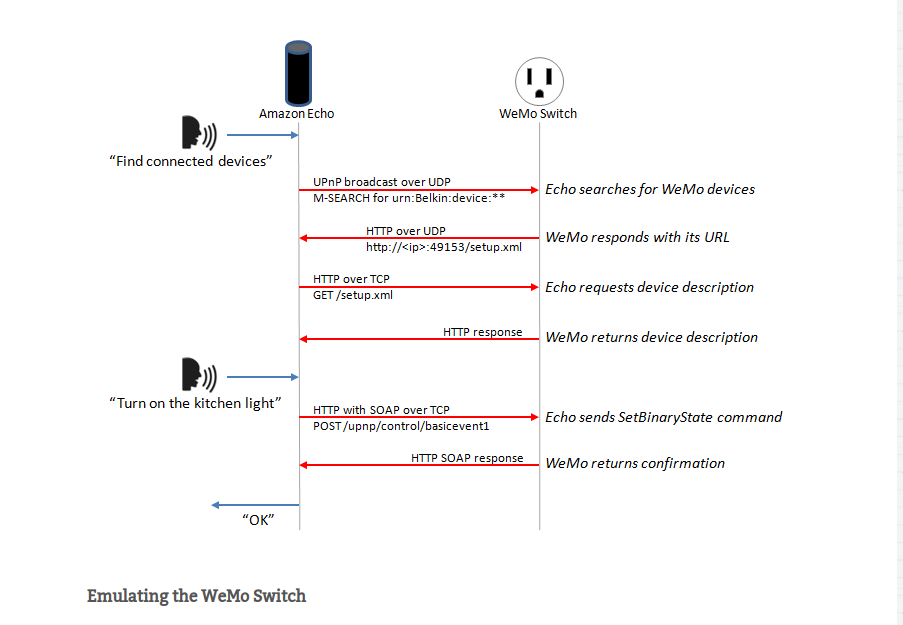
Tests Performed
Well, initially mention this test is basic, download the code to ESP8266, from alexa.amazon.com look for devices in our local network, find our new device and we can control a GPIO of our ESP8266 which will trigger a relay.
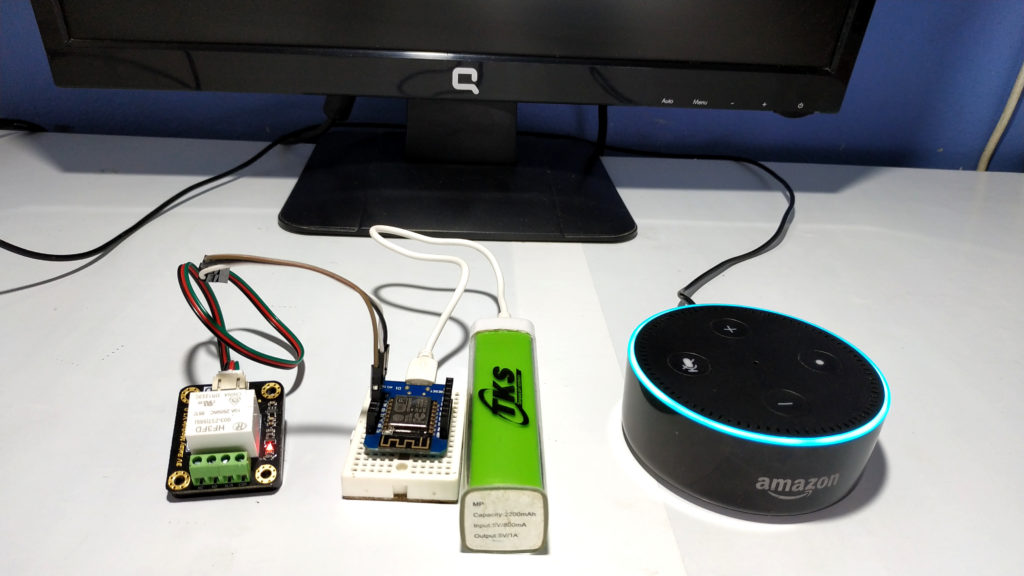
Materials
- Amazon Echo Dot, mine is second generation.
- ESP8266 12 Wemos D1 Mini
- Module Relay Gravity : activation relay a 3v, Load 250VAC 10A
- various wires & Protoboard
Other Recommended
Arduino IDE Code
Perform tests with several libraries and available examples. I selected this version created by kakopappa Example arduino-esp8266-alexa-wemo-switch thanks for sharing your code.
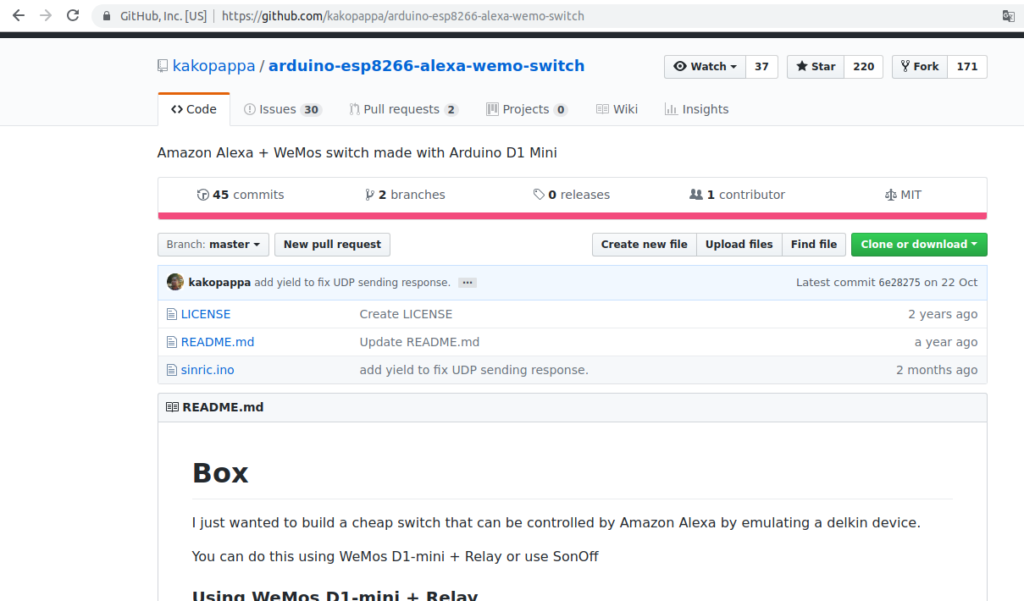
This version only allows to emulate a single Wemo switch, in the same Github repository of the creator there are examples to emulate several for several relay channels, in this case there is only one.
The following parameters SSID and Password of the network are required, it allows to modify the name of the device in my case “relay”.
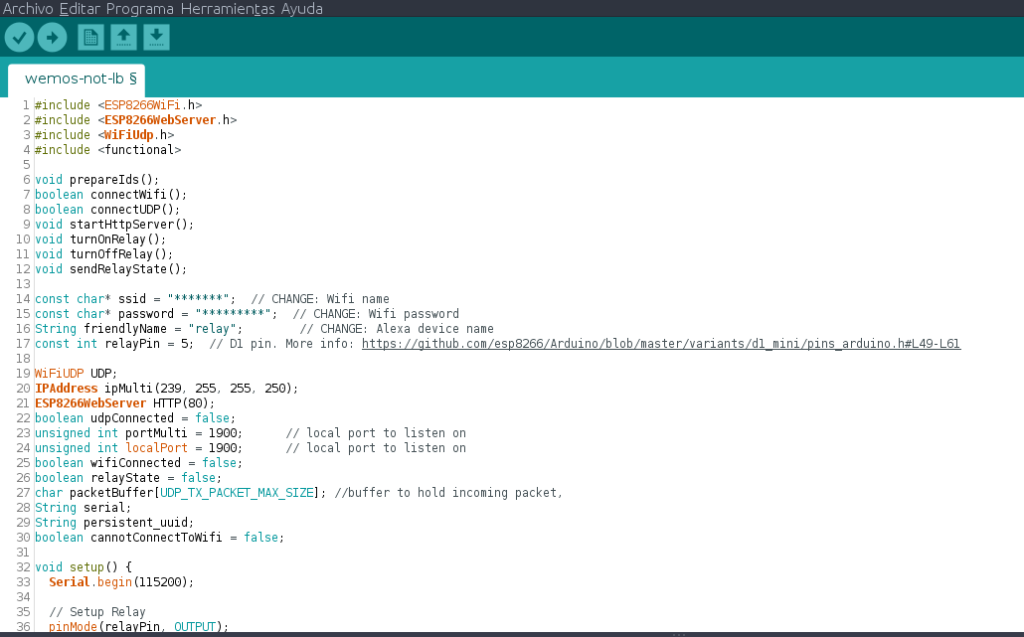
Alexa Amazon
From the web application alexa.amazon.com or the application for mobile devices, we tell alexa to look for new devices and our “relay” should appear.
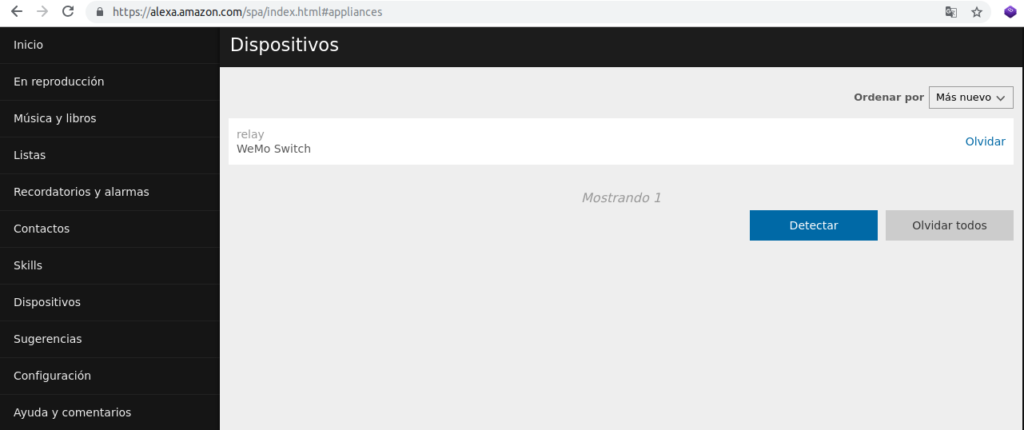
Final Test
To make the test more real, we have added an AC load in this case a light bulb. and with the commands “alexa turn ON relay” or “alexa turn OFF relay”.
Note: for reasons of being a quick test I used that battery to power the Wemos module, otherwise use a 5v source.
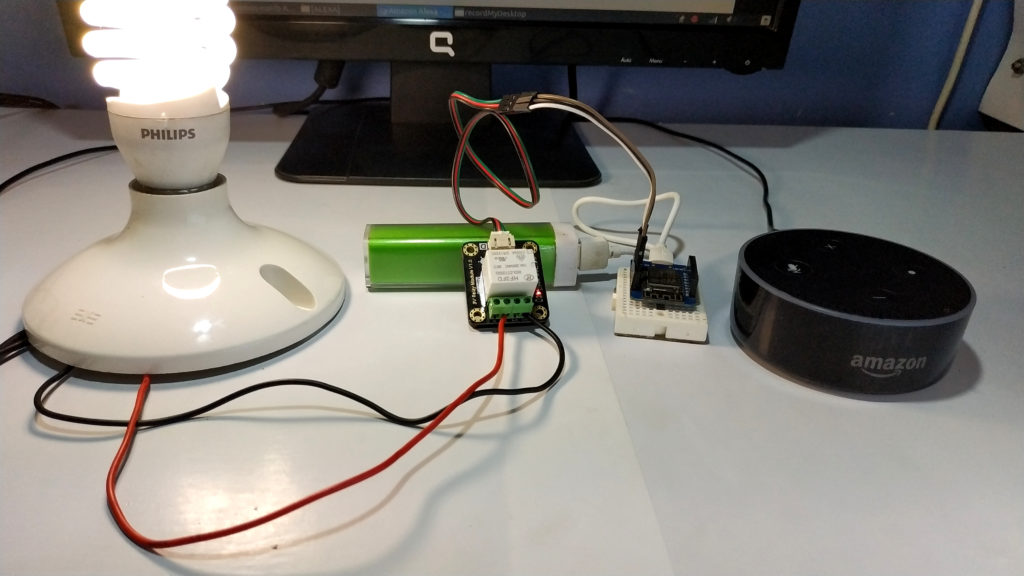
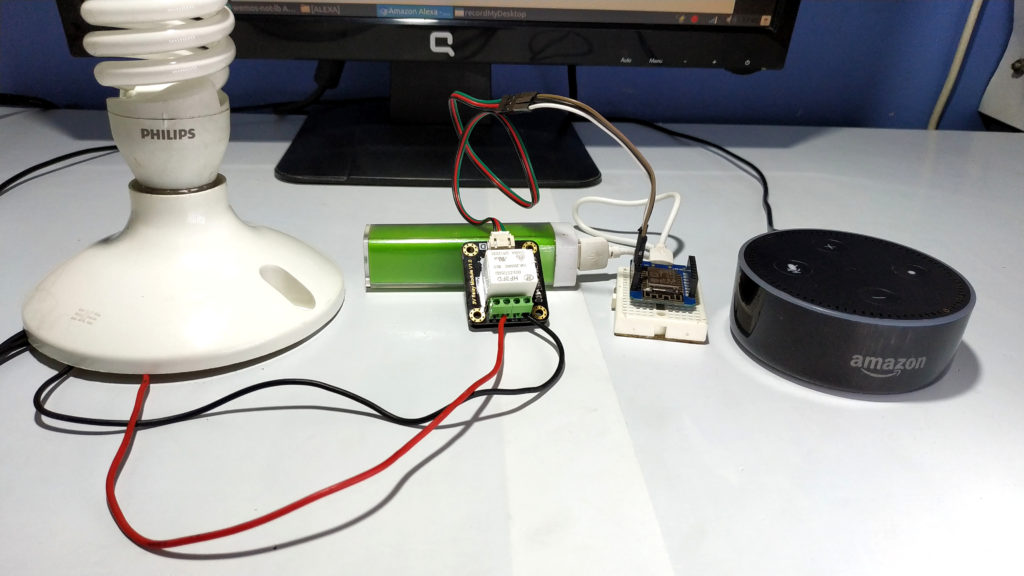
Video: Amazon Echo Dot (Alexa): ESP8266 WEMOS – Emuled WeMo Switch – Gravity Relay 3v DFRobot
Conclusions
This test is actually done a long time ago, although there are already other integrations with alexa. This is very practical since you can understand the method or protocol by which these intelligent speakers work, although I am not 100% sure if it works with more modern versions. said speakers.
erent to the hardware, the relay module Gravity is very good, unlike the conventional relay modules this works with a control signal of 3.3 volts perfect for our ESP8266 or ESP32 also the Raspberry Pi, without having the fear of damaging our GPIO, and it allows to control loads of up to 10A, an important factor since they are factors that people do not analyze when using relays.
Thanks to the DFRobot.com online store, its modules are excellent for professional and semi-professional projects and applications.
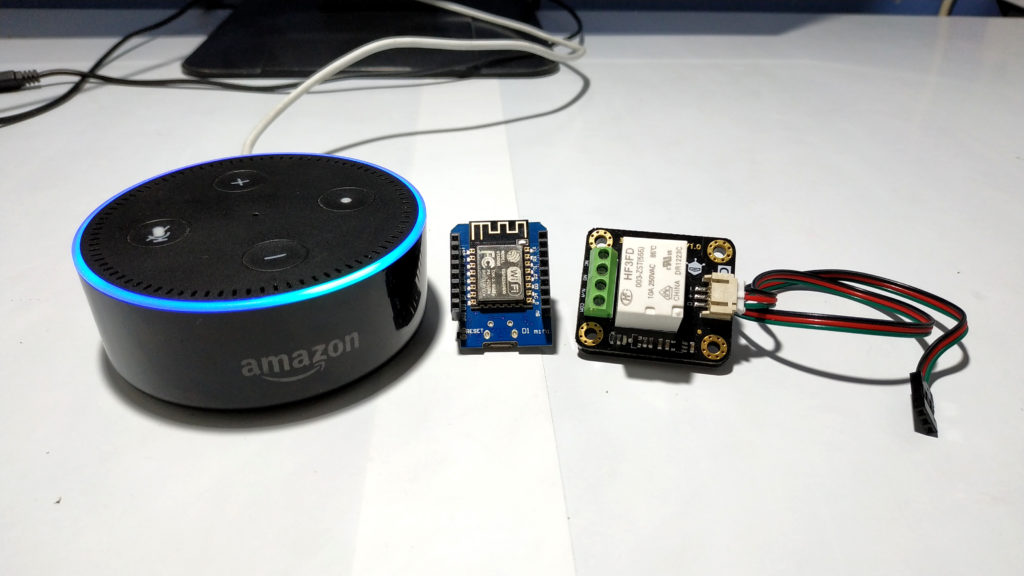
For tests integrating new voice commands from alexa, we will test the Skills and AWS,
